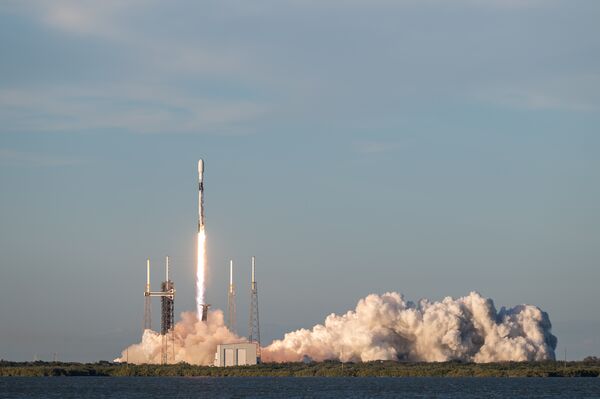
A SpaceX Falcon 9 rocket launches from Space Launch Complex 40 at Cape Canaveral Space Force Station, Florida, on 14 February 2024. (US Space Force )
The Pentagon's Space Development Agency (SDA) and Missile Defense Agency (MDA) successfully launched several new low Earth orbit (LEO) satellites on 14 February, marking key milestones for each agency's premiere missile warning and missile tracking satellite programmes.
The US Department of Defense (DoD) confirmed that two Hypersonic and Ballistic Tracking Space Sensor (HBTSS) satellites and four Tranche 0 Tracking Layer (T0TL) space vehicles (SVs) were launched into orbit aboard a SpaceX Falcon 9 rocket, taking off from Cape Canaveral Space Force Station in Florida.
All six LEO satellites are now undergoing “initial testing and check-out” after going on orbit, according to a 15 February Pentagon statement.
“Over the next few weeks, MDA and SDA engineers will run a series of tests and check-out procedures to ensure the satellites are operating and communicating with other systems as expected,” the statement added. Once these initial checkout procedures are complete, the six SVs will begin a two-year period of on-orbit testing to validate and mature the missile defence capabilities aboard these platforms.
“This launch represents a pivotal time for [the] MDA as we enter a new phase of missile warning, tracking, and defence,” MDA Director US Air Force Lieutenant General Heath Collins said in a 14 February statement ahead of the launch. “These … satellites are an essential step forward in our efforts to stay ahead of our adversaries,” he added.
HBTSS is specifically “to address the requirement to detect and track hypersonic threats” as well as conventional ballistic missiles, according to MDA budget documents.
Looking to read the full article?
Gain unlimited access to Janes news and more...







